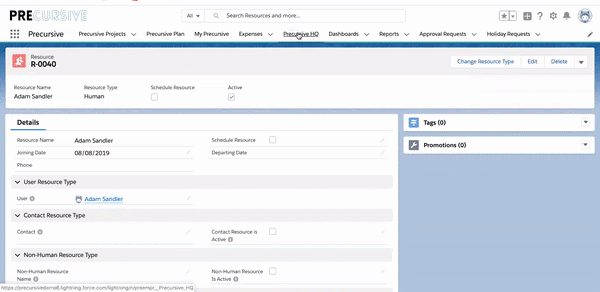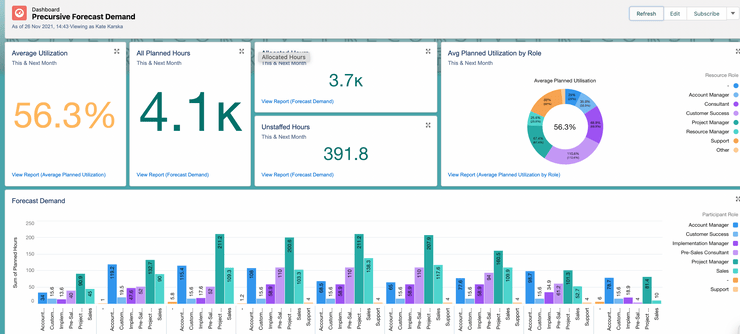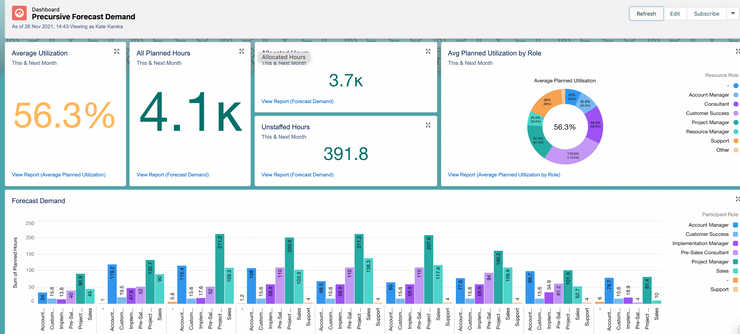WHY CYBERSECURITY COMPANIES NEED TO MASTER CAPACITY PLANNING

As we move into 2022 and an environment increasingly consisting of High-Velocity Services Delivery (HVSD), capacity planning and management becomes more important than ever. Capacity planning is key within a High-Velocity Service Delivery world, as by definition high levels of concurrent projects will need accurate and real-time capacity planning in order to be successful. Companies cannot afford to guess when it comes to capacity planning, especially when trying to scale.
In the last two years, the world of governance, risk and compliance (GRC) has seen a surge in business to help firms adapt to hybrid working by moving to cloud-first solutions, with 82% of companies increased their cybersecurity budget in the last year, which is great for business.
But this rapid growth has stretched the delivery and implementation teams that were already facing a skill shortage, with a wave of urgent projects for entire multinational companies to empower their workforces to work remotely. When every implementation is mission critical and cannot afford mistakes, this can put the teams delivering these systems under immense pressure.
Welcome to the capacity crunch. And in the long run, the companies that deal with this crunch the best will win at the expense of those that don’t.
With this in mind, what other factors are trending as being important in capacity planning in 2022, and how can we get ahead of the capacity game?
1. CUSTOMER SATISFACTION
The successful completion of each customer project is defined by a clever balance of capacity, productive utilization and skillset. Finding the correct balance will allow your project to run smoothly, complete on time, and meet your customer outcomes. Within our whitepaper around service delivery, 49% of our respondents confirmed that capacity was most important to them as it directly impacts their customer satisfaction scores.
Defining how customer satisfaction and capacity planning affect each other is easy. However, ensuring your company has accurate, real-time capacity data can only be achieved with a fully embedded capacity planning tool. This allows company stakeholders of all levels to view capacity levels and base strategic decisions on accurate data.
Below the Precursive Plan highlights the capacity of Alexander Craig, clearing showing a used capacity rate of 75% between 29th November - 6th December, with only 2 hours of free capacity per day:

2. BEYOND MANPOWER - PLANNING AROUND SKILL SETS
Confident capacity planning allows teams to ensure all concurrently running projects stay on time and on track for completion, it also allows managers to ensure they are making the most of their team's skill set and time. Ensuring that your teams possess the skills needed to complete projects and meet customer outcomes is a huge consideration when capacity planning. In 2020 PWC reported that 74% of CEOs were concerned about the availability of required skills in the workplace.
Clear capacity planning does not only highlight resources with select skill sets but enables team leaders to identify gaps in skill-sets and upskill team members investing in their careers.
Skills can be tagged to each resource within your Precursive UI, so viewing available resources for your project, available skills can easily come into play:

3. SCALABLE GROWTH
Without a doubt, capacity has a measurable impact on every business, especially business growth. Capacity planning is so vital to companies as it feeds directly into their ability to remain competitive, grow and build and retain a positive customer experience. Understanding capacity does not only allow companies to understand the resourcing requirements for projects, but affects staff morale, customer churn and budget requirements, all contributing to a company's rate of growth.
Capacity planning affects how a company's services are offered, the length of implementation times, and number of resources required. To truly harness the power of all of this data, it needs to be available all in one place. An automated system, showing accurate data, this place is not a spreadsheet. A huge part of planning is demand forecasting of resources. Ensuring that a company has enough capacity to grow is a balancing act between understanding existing utilization, predicted sales pipeline and new sales. Having a clear view of these three factors empowers stakeholders to view their capacity to deliver and need to hire.
This view is shown below on Precursive’s demand forecasting dashboard, all the data in just one place:

PUTTING IT ALL TOGETHER - SIMPLE, RIGHT?
So, let’s recap, why is capacity planning so important and how can we ensure we have a clear view?
-
Understanding your capacity is becoming more important than ever as we move further into a High-Velocity Services Delivery environment. Allocating resources across multiple projects means that a clear view of capacity is needed to avoid burnout. This clear and accurate view can be achieved with a capacity planning tool.
-
Capacity planning feeds directly into scalable growth, taking into consideration the morale and skill-set of your team. Being able to quickly and accurately understand the skills held within your team and their availability will lead to successful implementation and customer satisfaction.
-
The key to getting ahead of your capacity planning in 2022 is to move away from spreadsheets and towards an automated, real-time tool. Precursive will provide a clear overview of your capacity, resource skill-set and forward forecasting. Allowing you to set your project teams up for success.



